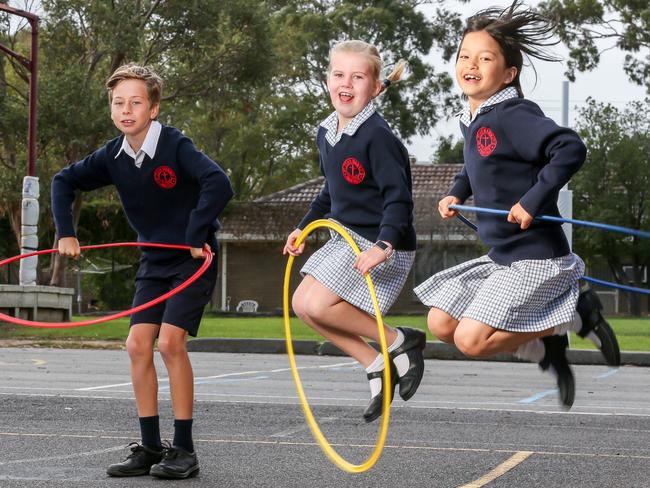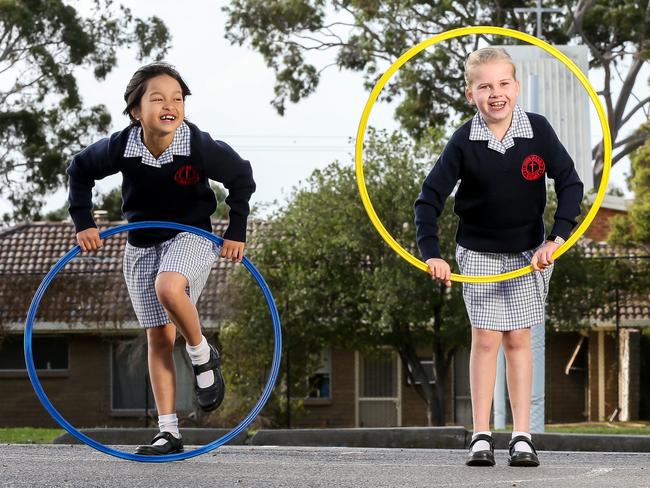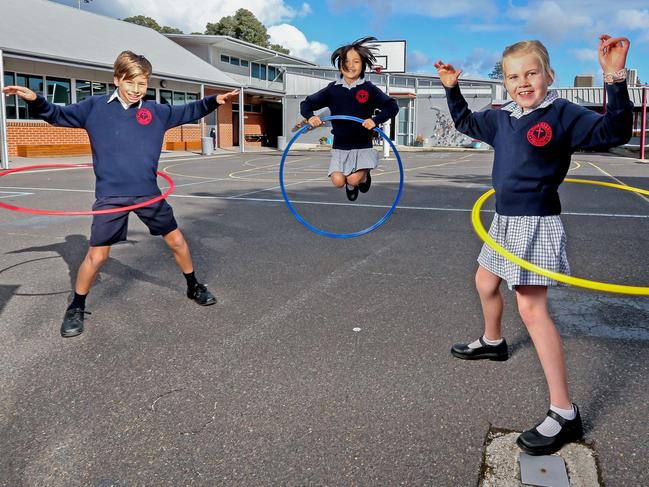Five-minute exercise break could help kids focus better in class
Is this the news teachers have been waiting for? Melbourne researchers have studied hundreds of primary school kids and found that a five-minute window is the key to getting them to focus in class.

VIC News
Don't miss out on the headlines from VIC News. Followed categories will be added to My News.
A five-minute exercise break during class could be the secret to schooling success, new research shows.
Boys’ behaviour benefits most from time away from their desks, according to the study. Experts say it improves their focus on learning.
Deakin University researcher Amanda Watson, who studied the impact of giving five-minute breaks to students at six Melbourne primary schools, said the results showed breaking up lessons with physical activity improved academic outcomes.
ATHLETES CALL FOR KIDS TO BE MORE ACTIVE
VICTORIA LEADS COUNTRY FOR CHILDHOOD OBESITY
PLAN FOR HEIGHT, WEIGHT CHECKS OF KIDS IN SCHOOLS
Children in the study were given three activity breaks across the school day.
“They can help kids to be more active which can help them to concentrate more and learn better at school,’’ Ms Watson said.
“The minimal time commitment required and positive effect on on-task classroom behaviour may make this an appealing intervention for schools.”

More than 300 grade 3 and 4 students were part of the six-week study, published in the Journal of Science and Medicine in Sport.
Drama, games and music were used to get them moving.
In one activity, pupils moved around the classroom to music and placed a body part on a chair. Others involved children negotiating real and imaginary objects and adjusting the pace of their movement to “fast forward, pause or rewind” like a remote control.
While the research found no benefit to children’s reading or maths achievement, Ms Watson found an improvement in classroom behaviour, especially for boys.
“This suggests that active breaks may affect classroom behaviour differently for different students,” she said.

“It may be that boys more so than girls need more opportunities to get up and move to refocus their attention on their school work.”
Boys’ tendency to be less ready to learn meant there was significant scope for them to benefit from breaks during class, Ms Watson said.
The study also showed no evidence active breaks had an adverse affect on classroom behaviour.
Time constraints due to the demands of the curriculum posed a barrier to implementing breaks, however.
St John Vianney’s Primary School deputy principal Helen Tancheff said the Parkdale school used active breaks to keep pupils more engaged.
“It gives the children a complete break from their learning, and gets the oxygen moving to their brain, so they’re refreshed and ready for more learning,” she said. “We’ve seen a marked increase in productivity and engagement because the kids feel good about themselves and are in a better place, ready to engage and learn something new.”


